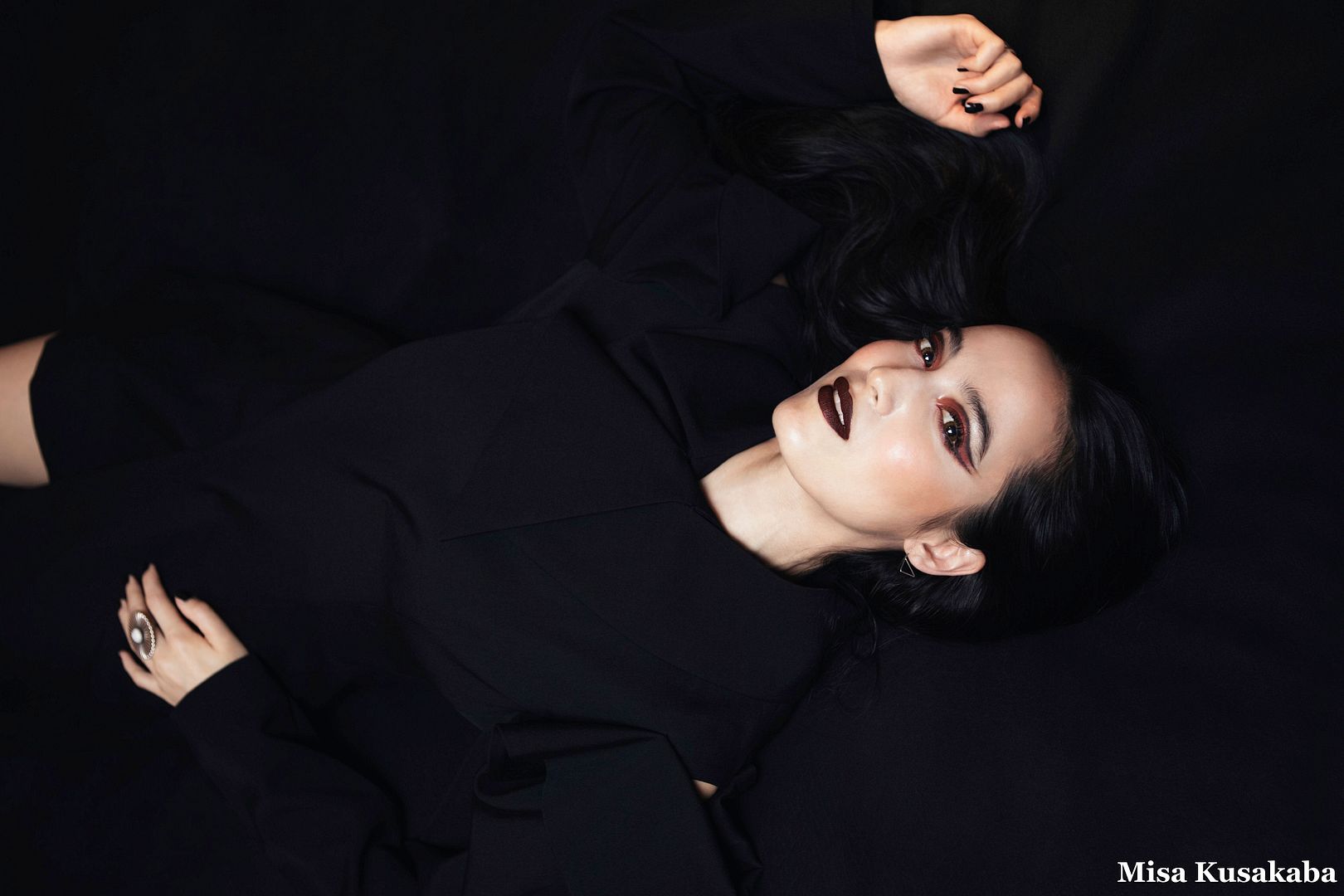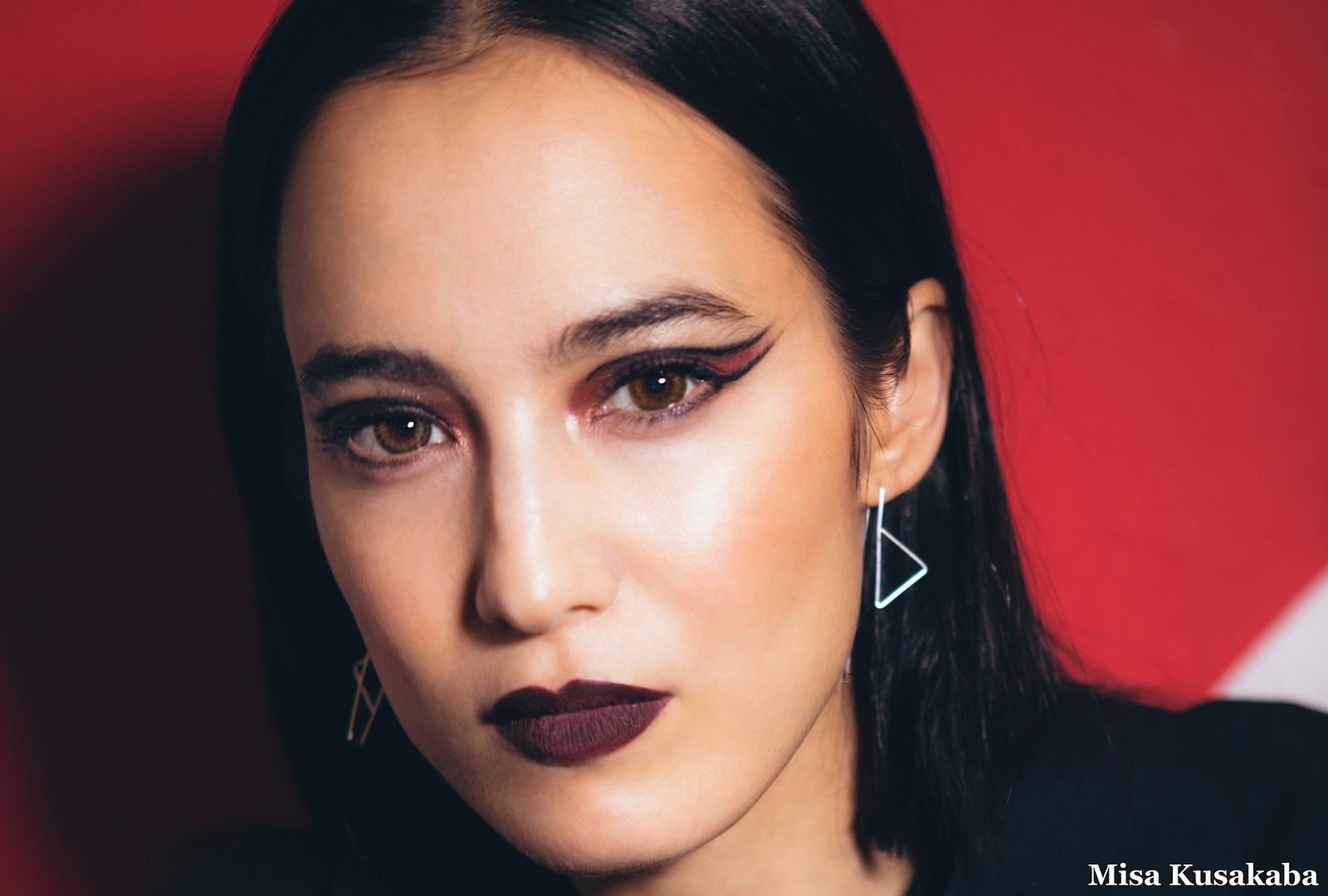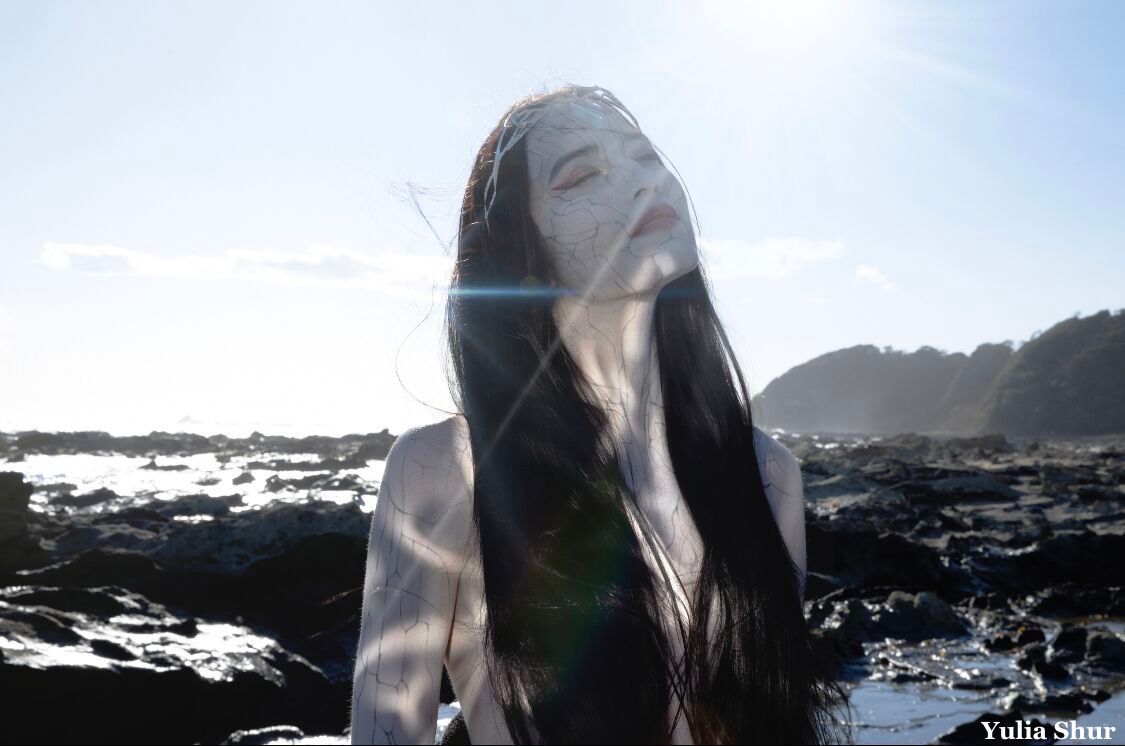UKICO – Trip-Hop From Tokyo With a Nod to Local Traditions

The story of Tokyo-based trip-hop artist UKICO is one that spans three continents, and includes time spent at multiple musical meccas.
Born to a Japanese mother and a French father, UKICO was raised in France, and attended La Sorbonne. After graduating, she moved to Tokyo before eventually making her way to NYC to study music engineering at the Institute of Audio Research. While in NYC she worked at both Strange Weather Recording Studio, and Birdland jazz club, before returning to Tokyo, which she once again calls home.
UKICO recently released her debut single, “Denial,” which is a trip-hop gem with a local twist.
Owning a strong sense of personality history, UKICO incorporates traditional Japanese instruments in her work, which is why “Denial” features the shakuhachi, a Japanese a bamboo flute. UKICO’s heritage also plays a prominent role in the video for “Denial,” which is the first of a trilogy based on the Japanese mythology of Japan’s creation.
Wanting to know more, I caught up with UKICO to find out about her incredible journey, the story behind “Denial,” and how the visually stunning music video came together.
I gotta start with your name. Does UKICO have a special meaning?
It’s actually my Japanese name, Yukiko, which means snow child.
I spelled it in a different way to be more artistic, starting with a U as in Universe, which is a big theme in my life and projects.
You have a fascinating personal history, with time spent in France, NYC, and Tokyo. Where, in all of this, did you discover your affinity for trip-hop, and how did you go about nurturing that love?
The love for trip-hop came when I was studying music engineering. As I learned manipulation of sounds, and trained my ear, I got to really listen, and discovered a whole new world in music. After that I could hear music so differently, with more depth and details. It became fascinating. Therefore how could I not be fascinated by trip-hop’s legends Massive Attack and Portishead!
I also think that being French made me drawn to the sexiness in their sounds, the slower tempo vibes.
I was also living in Brooklyn, which was a nest for indie music and creators.
When I interned at Strange Weather (in Brooklyn), we got to record Ghostface Killah’s album 36 Seasons. The process was fascinating, starting off with recording drum loops, adding drum machines, bass hooks, guitar hooks, etc., and that’s how I produce now, starting off with vintage drums and samples, sounds that inspire me, creating a mood and vibe first before creating the song structure.

Tell me about the importance of incorporating Japanese instruments into your music.
I wanted my music to reflect who I am, and my roots. I was born and raised in France, but after university I moved to Tokyo because I felt the need to get to know my other culture.
Japanese culture has so much depth, and sensitivity, and the fascinating traditional Japanese instruments express that very well, I think.
After leaving NY, because my Visa ran out, I actually wasn’t sure where to go next. I came back to Tokyo just to see, but I think that was the universe making me come back to have that idea of using these instruments – the koto, shakuhachi, shamisen, taiko.
The day after I decided to use traditional Japanese instruments I immediately got connected with a famous koto teacher at Geidai, the Tokyo University of the Arts. He got so inspired by spreading those beautiful Japanese instruments to the youth, and a different audience, that he invited me to class, and a lot of their shows!
Now I play shows with a shakuhachi musician, or an electric shamisen musician!
“Denial” is your debut single. What was the inspiration for the song?
Looking back at the process of writing my album (which will be released next year), every song reveals a piece, a moment of my growth through my spiritual discoveries and the therapeutic process of creation.
“Denial” was written at the beginning of the journey, after a tough break up. I was in total denial of shutting my heart to love, but when writing this song the chorus’ words came out with the melody unexpectedly – “Hiding from a new romance.”
Looking back now there was another layer of “Denial,” blaming the other for the pain while I was causing it to myself, feeling responsible, etc.
It’s a beautiful thing to uncover your subconscious thoughts, I think that’s where you find strength and growth. Admitting them is the hardest part, which I think writing this song helped me to do.

How did you land on the mythology of Japan’s creation as a visual representation for the song?
My Japanese grandfather is from Izumo, a holy place in Japan where a lot of the mythologies take place.
The music video is about the two first gods who created Japan – Izanagi and Izanami. They birth the land, then the gods, but Izanami (the female), after birthing the god of fire, dies and goes into the underworld.
You can actually find the underworld’s door in Izumo, as well as the tomb of Izanami!
As it is a Buddhist and Shintoist culture, we believe there is a god in everything – wind, mountains, trees, etc. – and every year for one month all the gods gather in Izumo-taisha, which is one of the biggest temples in Japan, to have a meeting about Japan.
All of these stories, and also my personal beliefs, made me want to use mythological stories in my projects. Spirituality is a huge part of my life and creative process, but you can also say that the video is kind of an homage to my family and roots.
How did the video come together – from the setting, to the dancers, to the makeup?
My dear friend Amazing Jiro is an SFX makeup artist who is as good hearted as he is talented, and we always talked about collaborating together. I wanted to be the fallen god Izanami, and have my skin broken into pieces. “Who else could do that!” I thought.
Another dear friend, Yulia Shur, who is a Belarusian photographer and art director living in Tokyo, was also very involved in the project.

From the start we were brainstorming ideas to make my initial idea into a music video.
When I went to Geidai to watch some concerts there were a few with Nihon Buyo dancers, and I was fascinated by them. (They had) beautiful, slow movements, even a bit creepy. Right away I found this amazing Nihon Buyo dancer, Asuna Hanayagi, who is featured in my video.
The butoh dancers were Yulia’s idea. She was actually taking classes, and took me with her. I loved it very much, as it doesn’t involve much technique, but rather pure improv on a theme, and your feelings. (It’s) pure expression, and very therapeutic.
So we got the teachers – Yuri Nagaoka, and Temmetsu – on board to perform a ritual on me, growing the darkness inside to finally push me into the underworld in the video.
We also got the chance to collaborate with an amazing lighting artist, Yosuke Shimada, whose style is very unique.
The gorgeous scenery was actually by luck. I really wanted to shoot in a cave, and the director, Chris Rudz, knew of one in Miura (an hour and half from Tokyo), where he actually had a party, but when going location hunting we discovered this surreal gorgeous beach. It was like the gods showed us where they wanted the scene to take place.
For more UKICO, check out ukico-official.com, and follow her on Facebook, Twitter, and Instagram.

Comments